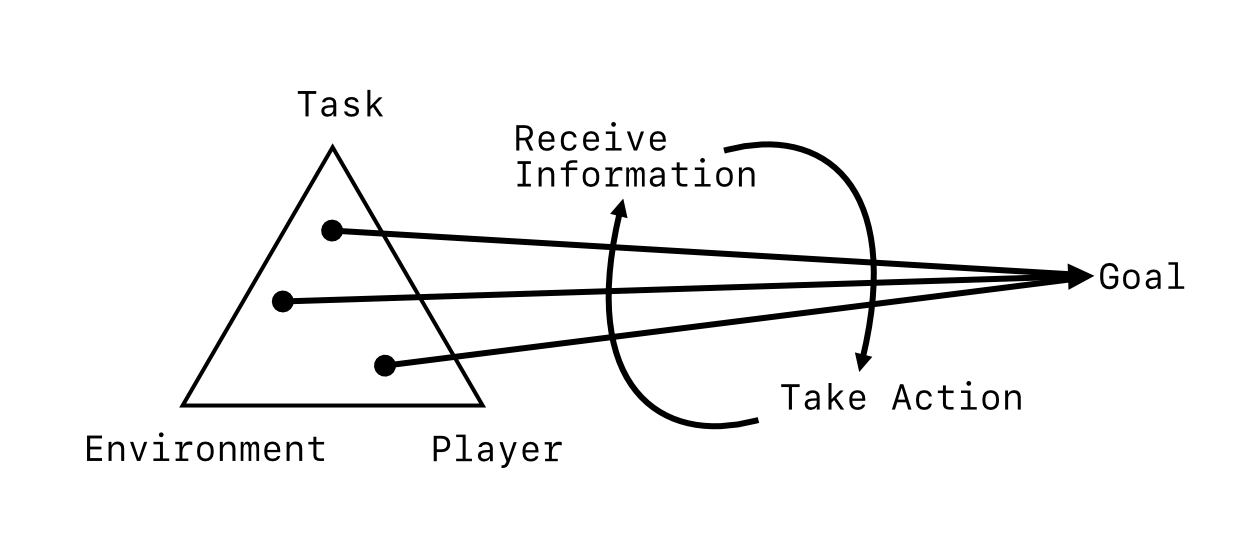Constructivism for Normal People
Listen to this post
My previous post was a little dense and academic. Sorry about that.
We're not all educators, but we are all learners. Even though Ecological Dynamics was a little hard to parse, there's some really helpful learning advice contained there. I'm going to sum it up here in a more casual tone.
And before you read this point I want you to pause. Think about something that you are trying to learn right now. As you continue through the concepts below, take the time to think about how you could apply them to your own learning journey.
The word "Constructivism" refers to a simple idea: Knowledge cannot be shared. It isn't given, or taken, or picked up, or pulled down. Knowledge is Constructed.
We take ideas and influences and observations and reflections and experiences and questions (and sometimes even a little inspiration) and we bundle them all up into a sort of mental clay, and we use that to build our own Understanding. That's how we learn.
That's what I mean by Constructivism.
With that in mind, here are some practical tips for when you're approaching a new skill or idea that you want to wrap your brain and body around.
1. Shake it Up
When you're trying to acquire a new skill, one shortcut is to practice under a variety of conditions. Let's say you want to get better at playing piano. You should do it in the morning, in the evening, on an electric keyboard, when you're feeling blue, when you've got too much energy to sit still, and when you've had one too many glasses of wine. If you can, play on multiple instruments, in public and in private.
Or maybe you're learning Spanish. You might mess with the medium (reading, speaking, writing), or the method (a group class, 1:1 zoom call, a book, duolingo, a tv show).
Regularly place your learning in new and unique contexts.
2. Keep it Real
Preference authentic learning modes. Everyone knows that the best way of learning a language is to go live in a country which speaks it. Because it's real. It's meaningful. The outcome of getting a duolingo question wrong is a red box and a sad sound. But in a real-life social interaction, the outcome is embarrassment! What could be worse!?
You won't learn to surf in your backyard. You won't learn guitar studying chord charts. You won't learn to throw pottery by watching YouTube shorts. You won't learn survival skills while camping in your backyard.
Regularly place your learning in authentic contexts.
3. Reflect → Retry Cycle
This one is simple to understand (I think we all know it intuitively) but hard to implement, at least for me. But oh boy, does it supercharge your build process.
Reflect!
Take the time to both record your practice, and then look back on it. It's almost impossible to have an accurate concept of your practice in the moment. Observing your past work allows you to recognise the parts that are wrong, but also the parts that are almost, but not quite, right.
Learning to code? Revisit your project a month or two after it's done, and review the code. Learning improvisational comedy? Record yourself speaking, then listen back to it. Learning to cook? Practice those chopping skills in front of a camera. Learning the periodic table? Try writing it out from memory, then check to see what you might have missed.
Then, once you've reflected, try again. Adjust your approach using whatever you gleaned during your self-observation.
Regularly give yourself opportunities to reflect on your learning, and integrate that into your practice.
4. Stretch
You could start at the very beginning. It's a very good place to start. When you read you begin with ABC, when you sing you begin with Do-Re-Mi.
Or, you could throw away those old-school linear learning concepts, and jump right into the deep end!
It's best to have a balance of both. Find a difficulty that feels easy, find a difficulty that stretches you a little, and also find one that's way out of reach. Practice them all.
Shoot your baskets from the free-throw line. Shoot a three-pointer. Then shoot from half-court.
Play the bass line to Seven Nation Army, then play Another One Bits the Dust, and then, even though you can't quite wrap your fingers around the notes yet, give Good Times Bad Times a shot.
Regularly modulate the difficulty of your learning.
If you look at any of the most successful education institutions (successful in terms of learning outcomes), you'll see that these Constructivist ideas are at the core of their approach to learning.
So whatever you’re learning next, shake things up, keep it real, reflect, retry, and stretch yourself. And approach it with Curiosity (maybe my next post should be about Habits of Mind?). The more you practice this way, the more mental clay you'll have to play with while you construct your mental model.
